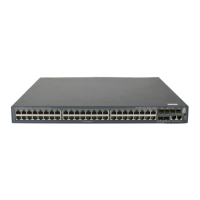71
Figure 27 802.1X authentication procedure in EAP relay mode
1. When a user launches the 802.1X client software and enters a registered username and password,
the 802.1X client software sends an EAPOL-Start packet to the network access device.
2. The network access device responds with an Identity EAP-Request packet to ask for the client
username.
3. In response to the Identity EAP-Request packet, the client sends the username in an Identity
EAP-Response packet to the network access device.
4. The network access device relays the Identity EAP-Response packet in a RADIUS Access-Request
packet to the authentication server.
5. The authentication server uses the identity information in the RADIUS Access-Request to search its
user database. If a matching entry is found, the server uses a randomly generated challenge
(EAP-Request/MD5 challenge) to encrypt the password in the entry, and sends the challenge in a
RADIUS Access-Challenge packet to the network access device.
6. The network access device relays the EAP-Request/MD5 Challenge packet in a RADIUS
Access-Request packet to the client.
7. The client uses the received challenge to encrypt the password, and sends the encrypted password
in an EAP-Response/MD5 Challenge packet to the network access device.
8. The network access device relays the EAP-Response/MD5 Challenge packet in a RADIUS
Access-Request packet to the authentication server.

